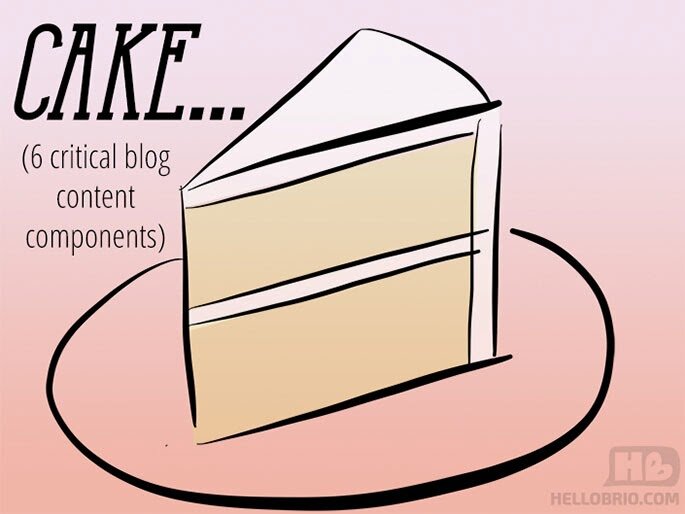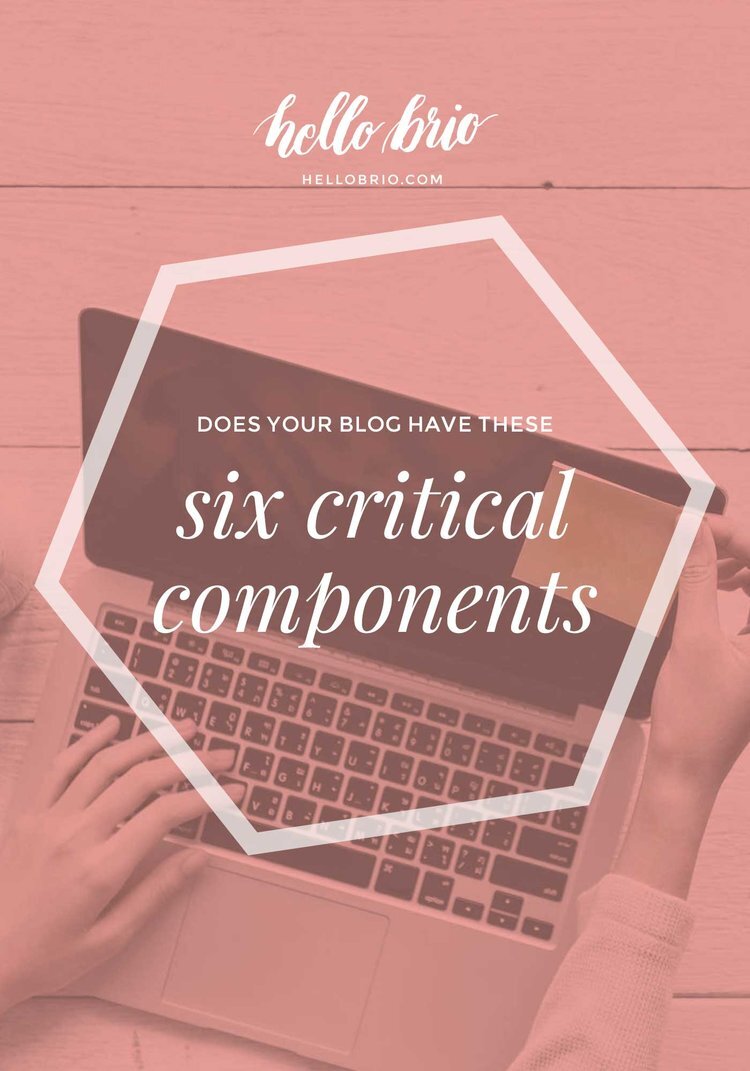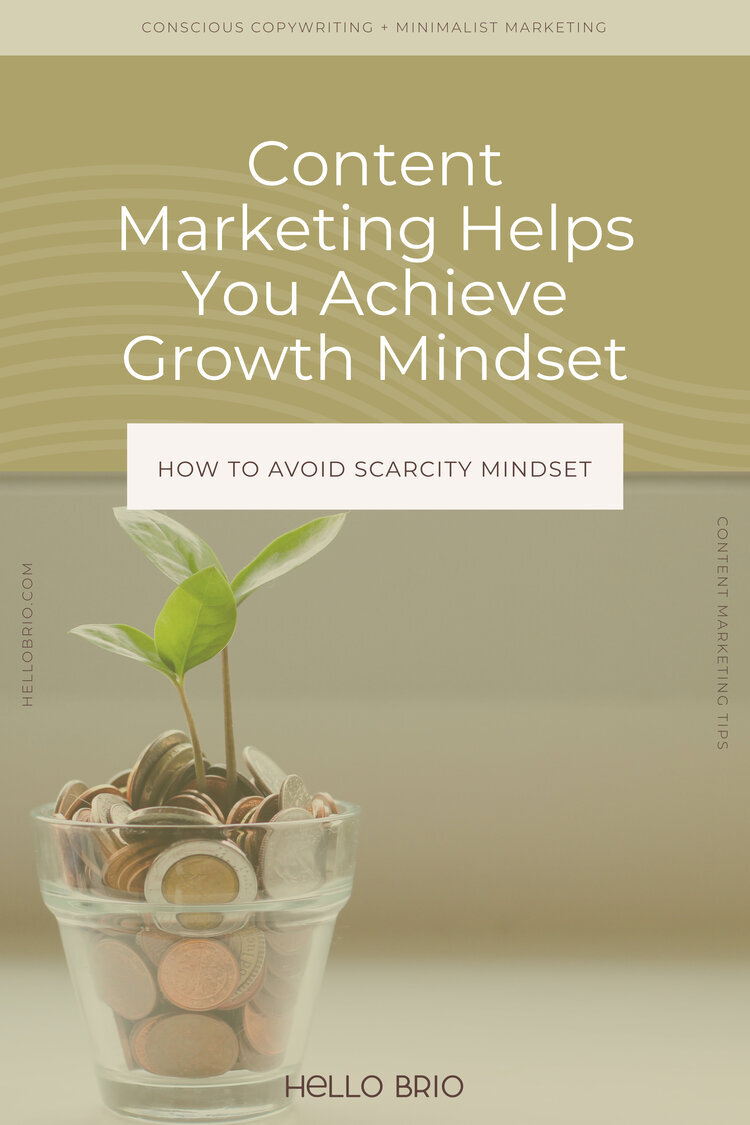Does your blog have these 6 critical components?
All great blogs are made up of two key ingredients: the cake and the icing.
So, while you need an attractive blog design to avoid repelling visitors, you also need a few critical content components, meaning a substantial cake framework.
Getting hungry yet?
If you're setting up your blog for the first time, you'll need to brainstorm and write these content pieces in this post.
Pin for later
Don't launch without your basics
If you launch your blog without the expected pieces, someone may come across your site, not know what it's about, and then disappear. Meaning: you may lose a potential repeat visitor.
A clear blog title and tagline
I've come across so many great looking blogs and then immediately bounced away (hit the big red X) because it wasn't clear what the blog was about.
A blog title and/or logo should appear on every single page of your site, so people know where they are. This part is obvious, and mostly everyone does this.
Don't forget your tagline
The tagline is what a lot of people forget. When people land on your site, you have mere seconds while they figure out if they want to stay there or not. If the content is relevant for them or not. If they even know what they're looking at or not.
The tagline is short phrase that encapsulates what your blog or site is about. It can be more abstract (i.e. evoke a general feeling, like "Must have every shade of lipstick") or more to the point (i.e. "A Beauty Blog for lipstick enthusiasts") but either way, the combination of your blog title and tagline should tell your readers:
What the blog is about
Who the blog is for
A bit about your and your blog's personality
For example, “Hello Brio Studio” does not stand alone. But “Hello Brio Studio: A lifestyle, design, and happiness blog focused on living beautifully and purposefully” does.
The tagline should appear alongside the title on every page of your blog. Visitors can land on your blog “sideways”, meaning that they can be referred to a specific blog post and not necessarily land on your homepage.
Tell visitors who you are and how they can contact you
An about page and a contact page or section are essential.
Both of these components should be readily available: i.e. linked at the very top of the header, the very bottom of the footer, or be prominent in your sidebar.
An about page is key for giving your readers a sense of who you are and what your blog is about. This is your chance to convey your personality, blog topics, and unique perspective. Including a photo of yourself can help your readers make a more personal connection with you, and an intro video of you can go even further.
A contact page or contact section is also important so people can get in touch with you. This could be as simple as including an email icon in your social media button area, to having a separate contact page with a list of links of where to find you, with an email contact form.
Give a proper introduction
Another great page to have is some sort of a “start here” or “first time reader?” page. This type of page is a little more fleshed out than your about page and can contain links to your most popular posts, any products or services you may offer, and offer ways to subscribe.
A succinct but helpful Start Here page will help readers decide whether your content will be of interest to them.
A “start” page can be more comprehensive and to-the-point than both the about and contact pages mentioned above. It should be as succinct as possible and will help people decide whether or not the types of content you offer will be of interest to them.
If you decide to include these blocks of information on your about page (like I do at the time of writing this post), make sure to break up your about page with prominent headers so readers can easily locate the desired section.
Social media links
This day and age, social media is a necessary evil (well, it's not so evil to everyone). Social media can be quite the bamboozler in terms of getting your blog and brand set up, because it can seem like a huge mental block.
To spare you my thoughts on social media in this post, let's just say that it's essential today if you wish to make meaningful connections with your readers and other bloggers.
So, spend the time and choose your preferred social media networks. You don't have to use ALL of them, but make sure that you choose one(s) that:
You personally like to use
You can see yourself using regularly
Your potential readers are already using
Using your chosen social media channels regularly is key. If you're not going to make the effort to log in once a day or once every few days and engage with others, then don't waste your time! The key with social media is to build trust and communication, and if someone stumbles across your dead social media page, they're going to wonder where you are.
(Yeah, do as I say and not as I do... no one's perfect.)
Make sure your social media links are prominent in the header, footer, or sidebar.
Does your blog have these critical components? What else do you always include in your blog, in terms of its content?
Cover photo by Cookie the Pom












